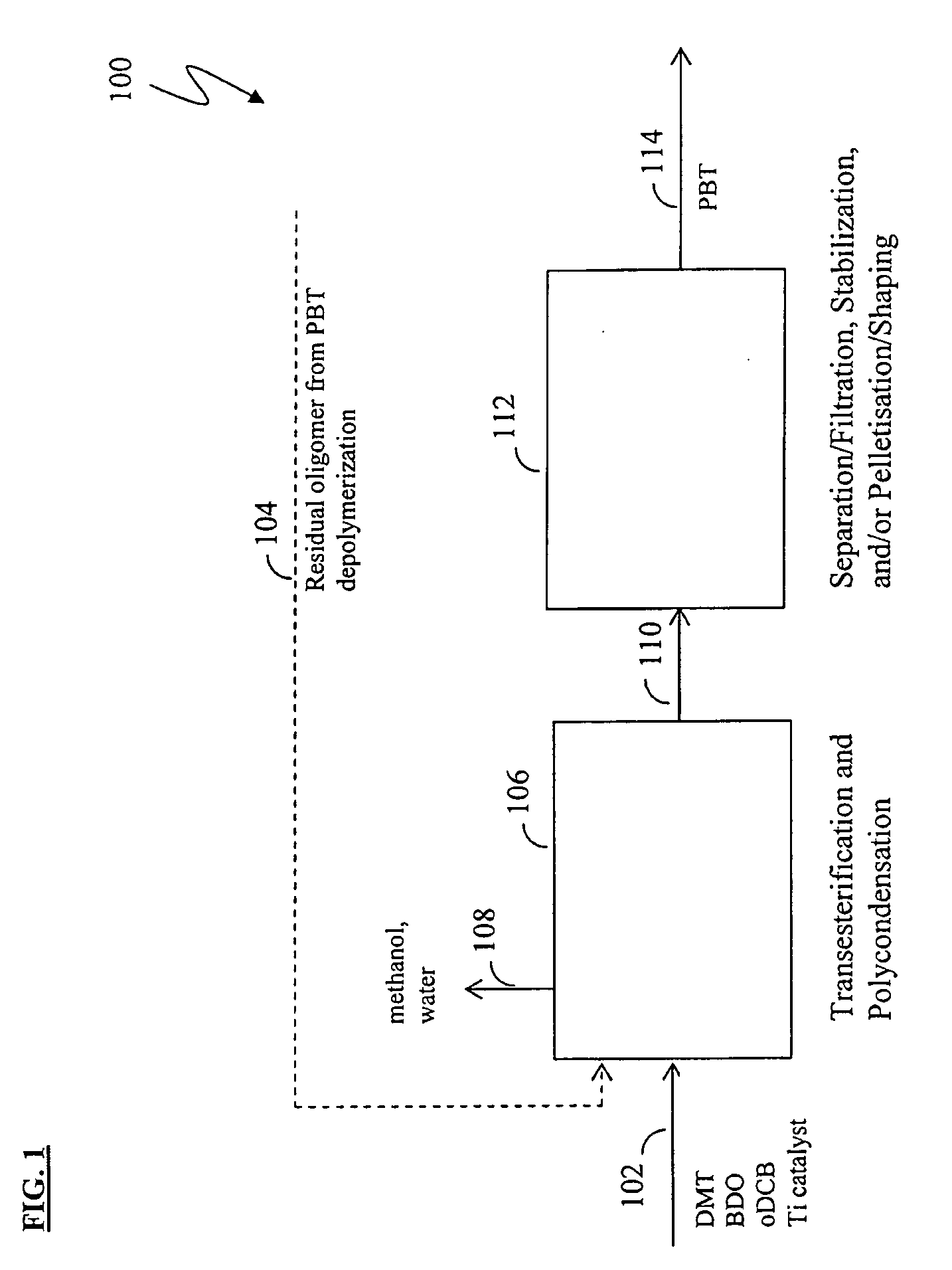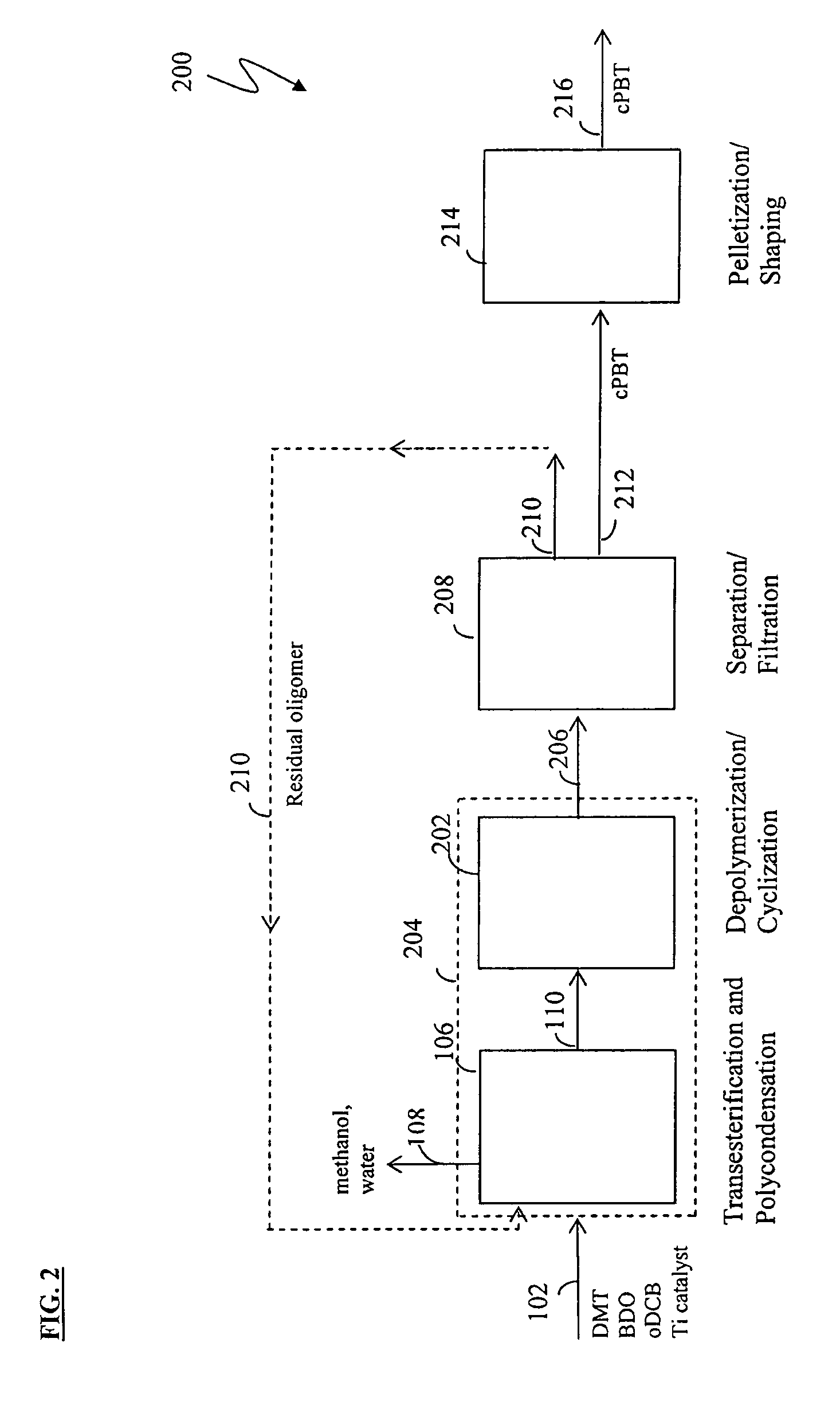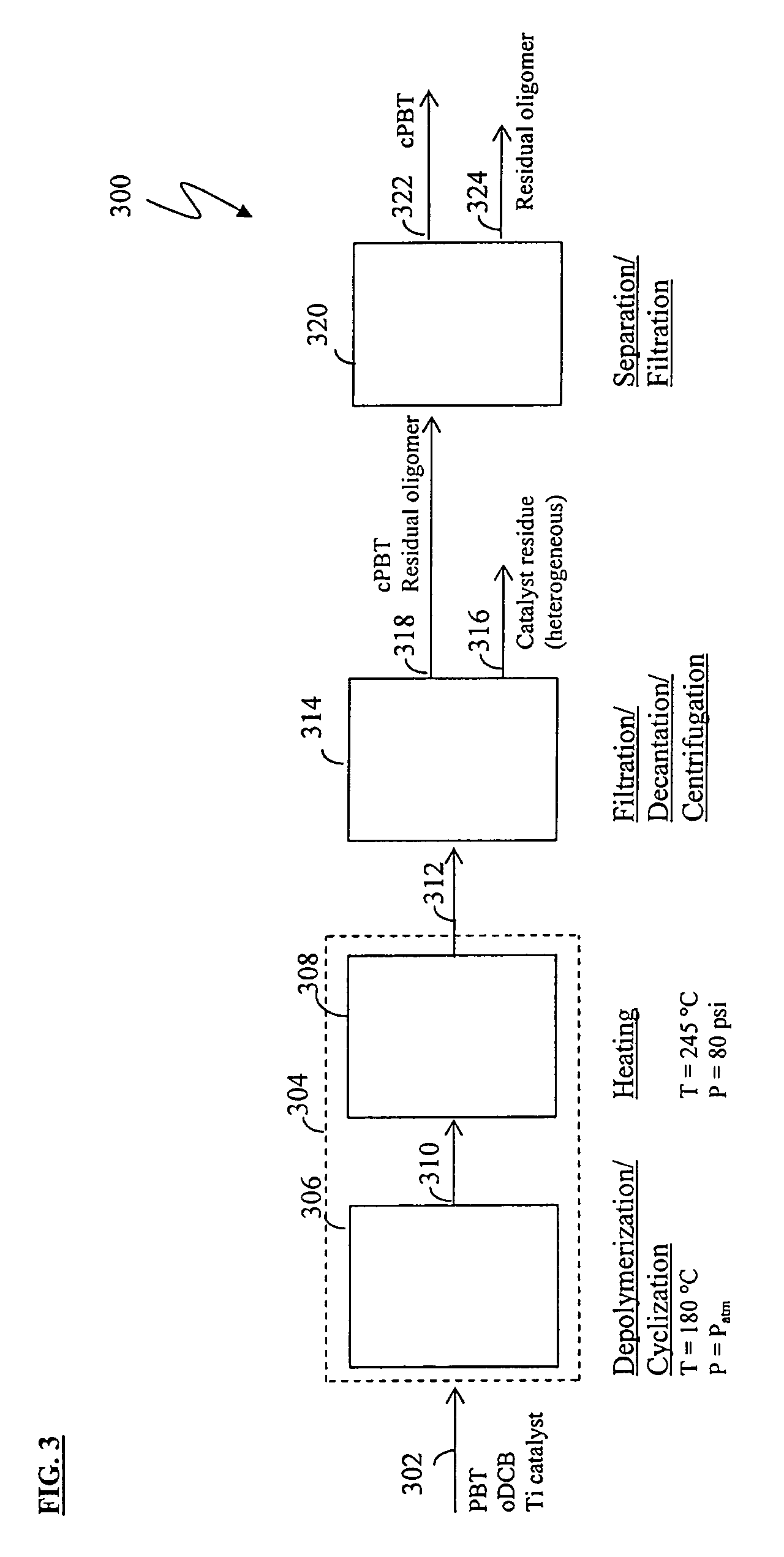Methods for removing catalyst residue from a depolymerization process stream
a depolymerization and catalyst technology, applied in the preparation of carboxylic acid esters, chemistry apparatus and processes, organic chemistry, etc., to achieve the effect of reducing the level of residual acid formed during polymerization, reducing purification costs, and less catalys
- Summary
- Abstract
- Description
- Claims
- Application Information
AI Technical Summary
Benefits of technology
Problems solved by technology
Method used
Image
Examples
experimental examples
[0154] Experiments were conducted to demonstrate the solution polymerization of low-acid PBT and subsequent depolymerization / cyclization to form cPBT. More particularly, Example 1 illustrates a method of producing low-acid PBT via polymerization in organic solvent (“solution polymerization”); Example 2 illustrates a method of forming cPBT via depolymerization of the low-acid PBT; and Example 3 illustrates methods for preparing, purifying, isolating, and repolymerizing cPBT produced from low-acid PBT.
[0155] Experiments were also conducted to demonstrate the removal of titanium catalyst residue from a reaction mixture following PBT depolymerization. Example 4 illustrates a method of removing titanium residue from a solution of isolated filter cake; Example 5 illustrates a method of removing titanium residue from a depolymerization reaction mixture; and Example 6 illustrates a method for characterizing titanium precipitation and settling behavior in depolymerization reaction mixtures....
example 1
Low Acid PBT by Solution Polymerization
[0159] Ten experiments were conducted with charges of BDO (approximately 0.250 mmol), DMT (approximately 0.98 to 1.02 molar equivalents of BDO), and anhydrous oDCB (enough to result in a solution containing about 30% reactant solids). Each charge was added to a 250 ml three-necked round-bottom flask equipped with a mechanical stirrer, a short path distillation head with a receiver flask, and an inert gas inlet. The weights of the charges for the ten experiments are listed in Table 2.
TABLE 2Summary of Solution Polymerization Data of Example 1AdjustedCatalystBDODMToDCBTPTMonomerLevelReaction(g)(g)(g)(mg)(% vs. BDO)(mol % Ti)114.3030.5889.8061.60.070.136216.8236.0578.41233.3−0.570.440316.1634.6586.2425.30.030.050415.3433.0057.607.7−0.7310.161515.5032.7555.0824.7−2.0370.053625.3254.1567.2212.60.3690.016718.2239.39107.5015.8−1.0480.028821.8446.3787.9017.21.1960.025918.9940.02116.6014.61.2170.0251022.8548.6274.6411.40.8940.016
[0160] The reactants ...
example 2
Cyclic Poly(Butylene Terephthalate) (“cPBT”) Formation from Depolymerization of Low Acid PBT
[0161] A charge of about 7 mmol PBT and anhydrous oDCB were added to a flame-dried three-necked 250 ml round-bottom flask equipped with a mechanical stirrer, a short path distillation head and condenser, and an inert gas inlet (the charge amounts are listed in Table 4 below). The flask was then submerged into a 220° C. oil bath. After the PBT dissolved and several milliliters of solvent had distilled overhead (to ensure dryness of the reaction), an organo titanate catalyst solution of freshly prepared Ti(BD:HG) (4:1) in oDCB at a concentration of 0.220 mmol / g was added to the flask using a syringe. The reaction was then maintained under a positive pressure of dry nitrogen, and the solution was periodically sampled to determine the extent of cPBT formation using the High Pressure Liquid Chromatography (“HPLC”) procedure described in Appendix D. The cPBT rates of formation for the reactions ar...
PUM
| Property | Measurement | Unit |
|---|---|---|
| temperature | aaaaa | aaaaa |
| temperature | aaaaa | aaaaa |
| temperature | aaaaa | aaaaa |
Abstract
Description
Claims
Application Information
 Login to View More
Login to View More - R&D
- Intellectual Property
- Life Sciences
- Materials
- Tech Scout
- Unparalleled Data Quality
- Higher Quality Content
- 60% Fewer Hallucinations
Browse by: Latest US Patents, China's latest patents, Technical Efficacy Thesaurus, Application Domain, Technology Topic, Popular Technical Reports.
© 2025 PatSnap. All rights reserved.Legal|Privacy policy|Modern Slavery Act Transparency Statement|Sitemap|About US| Contact US: help@patsnap.com



